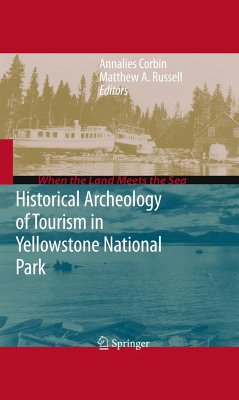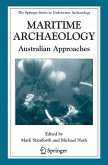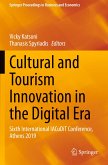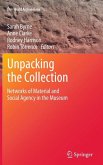This volume contains three studies that trace the history of tourism in Yellowstone National Park through material remains discovered in both terrestrial and underwater archeological sites. A research approach with an archeological foundation opens new avenues of inquiry not available by using historical documents alone. Incorporating archeological materials into our interpretations of historical tourism in Yellowstone can help counter research biases that hamper use of a sometimes-fragmentary archival record. Archeology gives voice to people otherwise missing from written history, and therefore give us the broadest view of the past.
These chapters draw together the fascinating historical archeology of Yellowstone National Park into a single volume linked by a common research framework, the archeology of tourism. While oftentimes treated as separate and unrelated resources, historical archeological sites on land, underwater, and in the liminal zone in between, connect in Yellowstone through a shared history and a universal purpose. Situating these sites within the context of a larger tourist infrastructure allows us to broaden our interpretation and enriches the stories the sites have to tell.
Far too often in the ?eld of archeology, the wheel of understanding and insight has a narrow focus that fails to recognize critical studies. Crucial information rega- ing pivotal archeological investigations at a variety of sites worldwide is extremely dif?cult, if not impossible, to obtain. The majority of archeological analysis and reporting, at best, has limited publication. The majority of archeological reports are rarely seen and when published are often only in obscure or out-of-print journals - the reports are almost as hard to ?nd as the archeological sites themselves. There is a desperate need to pull seminal archeological writings together into single issue or thematic volumes. It is the int- tion of this series, When the Land Meets the Sea, to address this problem as it relates to archeological work that encompasses both terrestrial and underwater archeology on a single site or on a collection of related sites. For example, despite the fact that we know that bays and waterways structured historic settlement, there is a lack of archeological literature that looks at both the nautical and terrestrial signatures of watersheds in?uence on historic culture.
These chapters draw together the fascinating historical archeology of Yellowstone National Park into a single volume linked by a common research framework, the archeology of tourism. While oftentimes treated as separate and unrelated resources, historical archeological sites on land, underwater, and in the liminal zone in between, connect in Yellowstone through a shared history and a universal purpose. Situating these sites within the context of a larger tourist infrastructure allows us to broaden our interpretation and enriches the stories the sites have to tell.
Far too often in the ?eld of archeology, the wheel of understanding and insight has a narrow focus that fails to recognize critical studies. Crucial information rega- ing pivotal archeological investigations at a variety of sites worldwide is extremely dif?cult, if not impossible, to obtain. The majority of archeological analysis and reporting, at best, has limited publication. The majority of archeological reports are rarely seen and when published are often only in obscure or out-of-print journals - the reports are almost as hard to ?nd as the archeological sites themselves. There is a desperate need to pull seminal archeological writings together into single issue or thematic volumes. It is the int- tion of this series, When the Land Meets the Sea, to address this problem as it relates to archeological work that encompasses both terrestrial and underwater archeology on a single site or on a collection of related sites. For example, despite the fact that we know that bays and waterways structured historic settlement, there is a lack of archeological literature that looks at both the nautical and terrestrial signatures of watersheds in?uence on historic culture.








